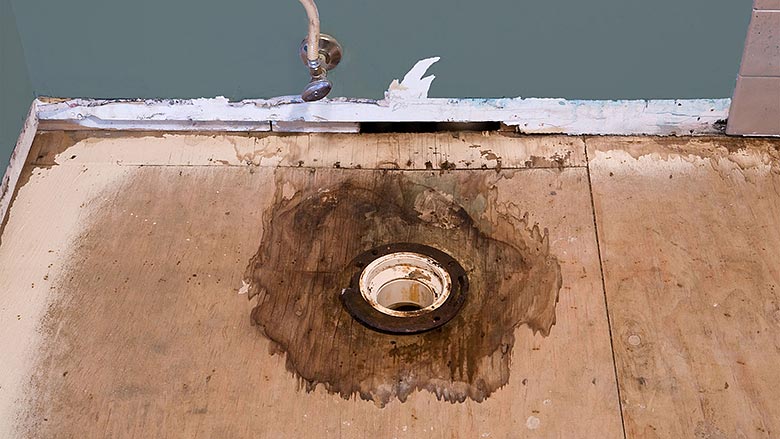Do you find yourself hunting for suggestions around How to Fix a Water Damage Bathroom?

The washroom is incredibly at risk for damp accumulation as well as potential water damage as a result of the frequent use water in it. This short article supplies basic inspection methods to aid discovering water damage dangers.
The frequent use of water in the washroom makes it very at risk for damp buildup and possible water damage. By checking it regularly, you can decrease water relevant damages.
The complying with collection of inspections is simple to execute and must be done once in every three months in order to keep your washroom in good shape and to stop potential water problems caused by the tub, the shower, pipe joints as well as plumbing, sinks, cabinets, as well as the commode
Do not overlook doing these inspections as well as be detailed while performing them. Remember that these simple assessments can conserve you a lot of cash by giving early signs for water damage
Tub and also Shower
The shower and tub call for unique focus and upkeep. Examine the tiles and replace if split. Make sure that there is no missing cement in between the tiles. Examine and also change cracked caulking at joints where the walls satisfy the flooring or the bathtub. Blocked drains pipes and also pipes problems will prevent the bath tub from drying out and may suggest significant troubles beneath the bath tub. Speak with an expert quickly to avoid architectural damages. Take note of stainings or soft locations around the tub wall surfaces as they might show an inner leak.
Plumbing
Signs for water damage are hard to discover considering that the majority of pipelines are mounted inside the wall surfaces.
Pay unique attention to flooring and walls moisture and spots as they may suggest an undetectable plumbing issue. Inspect wetness levels in adjoining spaces also.
Sinks as well as Cabinets
Sinks as well as cupboards are subjected to wetness as well as humidity daily and are typically neglected. Inspect routinely under the sink and on the countertop over it. Repair any type of drip in the trap as it may recommend drainpipe troubles. Check out the sink, slow-moving draining pipelines may indicate a blocked drainpipe. Change sink seals if they are fractured or loosened.
The Commode
The commode is a prone water junction. Examine the water lines and also search for leaks around the bathroom seat, in the tube, as well as under the water container. If you discover any type of indications of dampness on the floor around the commode, look for leaks in the toilet edge and also container seals.
Understand that hanging bathroom bowl deodorants enhances the possibilities for clogs.
TIPS TO PREVENT WATER DAMAGE IN THE BATHROOM
The average household uses approximately 80-100 gallons of water per person per day. For a family of 4, that's almost 2,500 gallons of water a week! The largest portion of this consumption comes from bathroom use. Flushing the toilet uses the most water, followed by taking a shower or bath. With that much water running through the home, water damage in the bathroom is bound to happen. Knowing how to spot signs of a water leak is essential to preventing long-term damage. This guide provides you with tips to reduce the impact of water damage on your bathroom.
CAUSES OF BATHROOM WATER DAMAGE
Pipe breaks are the most common cause of water damage we see in our daily jobs. The age of a pipe plays a large role in a pipe break as well as corrosion. Over time, the metal begins to break down, allowing water to escape. Frozen pipe breaks are also a concern in the winter months. Toilet overflows caused by paper products or children flushing inappropriate items. Degraded caulking around the toilet or bathtub can allow water seepage, sometimes behind the fixture, into the subfloor or walls. Condensation forms when the water in a pipe is cooler than the air temperature. Beads of water form on the exterior of the pipes, sometimes so much so that the water begins to drip and pool below. Sink or shower backups created by poor drainage. HOW TO PREVENT WATER DAMAGE IN YOUR BATHROOM
Inspect your toilet supply line for worn or frayed hoses and replace them as needed. Winterize your plumbing to prevent a frozen pipe break. Use vent fans to prevent condensation that can lead to mold growth. Routinely check and replace degraded caulking around your toilet or bathtub. Increase the temperature in your toilet tank and insulate your pipes during the warm summer months to keep condensation from forming. Use child safety locks on the toilets. Flush only toilet paper. "Flushable" wet wipes are actually not good for your plumbing system. Additionally, feminine hygiene products should not be flushed. Prevent water from escaping the tub or shower. Make sure shower curtains are in good condition. Inspect shower doors and replace the seal strip if necessary. Wipe up any water that accumulates on the floor and use bath mats. Water left to sit can cause damage to the tiles and flooring. Refrain from using bath products containing heavy oils to avoid a clogged drain.

Do you enjoy more info about How to Repair and Prevent Bathroom Water Damage? Give feedback directly below. We'd be glad to hear your opinions about this post. We are looking forward that you come back again soon. Do you know about another person who is serious about the subject? Be sure promote it. Thanks for going through it.
Schedule